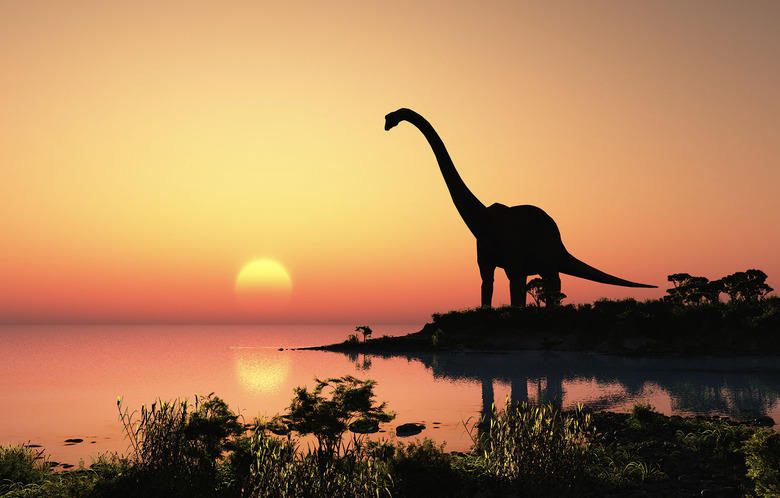This Massive Dinosaur Footprint Was Found Completely By Accident
Finding fossils that have remained hidden for 165 million years takes a lot of time, research, and usually plenty of digging. These ancient artifacts are usually buried deep within the earth, sometimes hidden within layers of rock and hardened sediment. So, if you were walking along the beach and stumbled across a dinosaur footprint, you could consider yourself one of the luckiest people on the planet. Marie Woods is one of those people.
Woods, a 29-year-old archaeologist, took a trip to the coast of Yorkshire in search of something, but it wasn't dinosaur fossils. All she was looking for was some shellfish. Instead, she came upon a colossal footprint believed to be around 165 million years old. The print is believed to be from a species of theropod, which are carnivorous dinosaurs that stood on two legs, much like the Tyrannosaurus rex. It's an incredible find and nobody even knew it was there. Well, almost nobody.
As the Good News Network reports, regional experts say that the discovery is the biggest in the area for over a decade and a half. The fact that the dinosaur print is so huge and well-preserved means that researchers may be able to identify the species after some additional investigation. Woods, for her part, is elated that she was able to find such a valuable piece of history.
"All I wanted to do was grab some shellfish for my dinner and I ended up stumbling across this," Woods said of her find. "I showed some paleontologist friends what I had found and none of them had seen it. It's really exciting."
But how did she find this massive print without someone else spotting it first? Well, she actually wasn't the first person to discover it. In fact, it had been found a year earlier by a local resident named Rob Taylor who photographed the track and shared it on Facebook. Unfortunately, it didn't gain much traction and the discovery fell off of everyone's radar. Because Woods is already in the archaeology field it was easier to get the eyes of scientists on it and now it's officially a big deal.
Because they both found it at different times, and Woods was the one that really brought it to the attention of the scientific community, both Taylor and Woods will share rights to the discovery. Depending on how things play out, the fossil could be studied by researchers to determine more about the animal that created it, and then there's a good chance it ends up on public display at a museum in the region. Since the fossil was found in Yorkshire and it's such a significant discovery, it makes sense that the fossilized footprint would remain in the same area.
